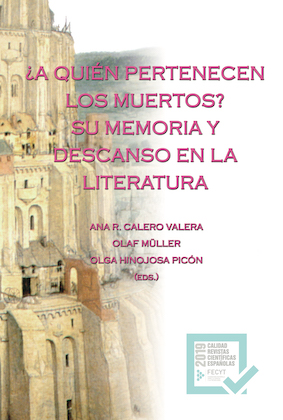Presentation
DOI:
https://doi.org/10.7203/qdfed.24.16326Keywords:
dead, literature, memory, violence, war Abstract
Abstract
The dead who populate the pages of this volume have become embedded in art and literature, which turn into containers and cultural artifacts in which to dialogue and (re-)negotiate ownership. It is the living who appropriate, rewrite and remember those who are no longer there, who serve as a projection for imaginaries and imaginations. The dead who are related to the violence and repression of dictatorial regimes, as well as to wars, fundamentally the First and Second World Wars, take on a special role. The approximately thirteen million deaths brought about by the Great War forced modern European nations to confront mass crimes for the first time and the ensuing problem of burying the bodies of soldiers and commemorating them in the national ideologies that were being developed at the time.
 Downloads
Downloads
Downloads
Published
How to Cite
-
Abstract524
-
PDF (Español)334
Issue
Section
License
 Este obra está bajo una licencia de Creative Commons Reconocimiento-NoComercial-SinObraDerivada 4.0 Internacional.
Este obra está bajo una licencia de Creative Commons Reconocimiento-NoComercial-SinObraDerivada 4.0 Internacional.
Authors who publish with this journal agree to the following terms:
- Authors retain copyright and grant the journal right of first publication with the work simultaneously licensed under a Creative Commons Attribution License that allows others to share the work with an acknowledgement of the work's authorship and initial publication in this journal.
- Authors are able to enter into separate, additional contractual arrangements for the non-exclusive distribution of the journal's published version of the work (e.g., post it to an institutional repository or publish it in a book), with an acknowledgement of its initial publication in this journal.
- Authors are permitted and encouraged to post their work online (e.g., in institutional repositories or on their website) prior to and during the submission process, as it can lead to productive exchanges, as well as earlier and greater citation of published work (See The Effect of Open Access).



